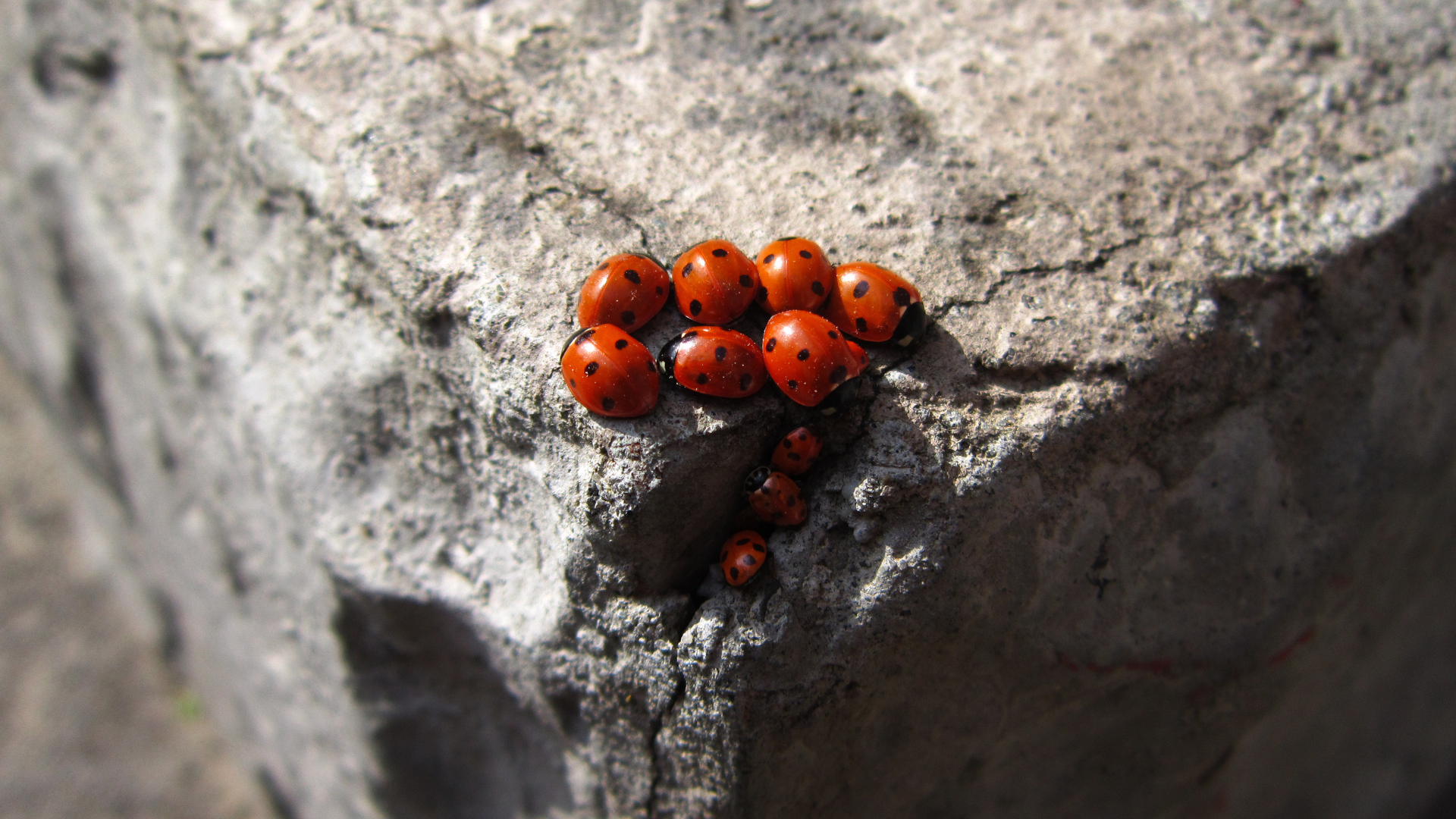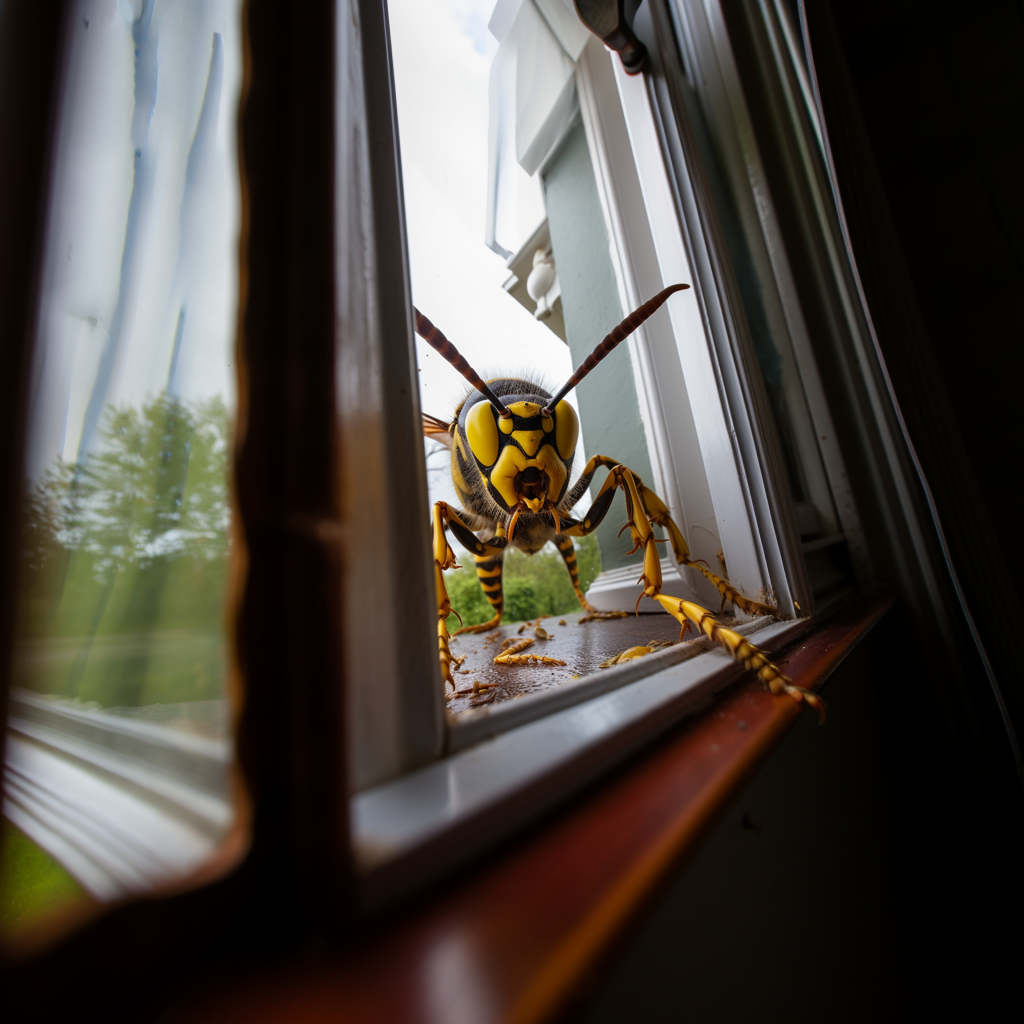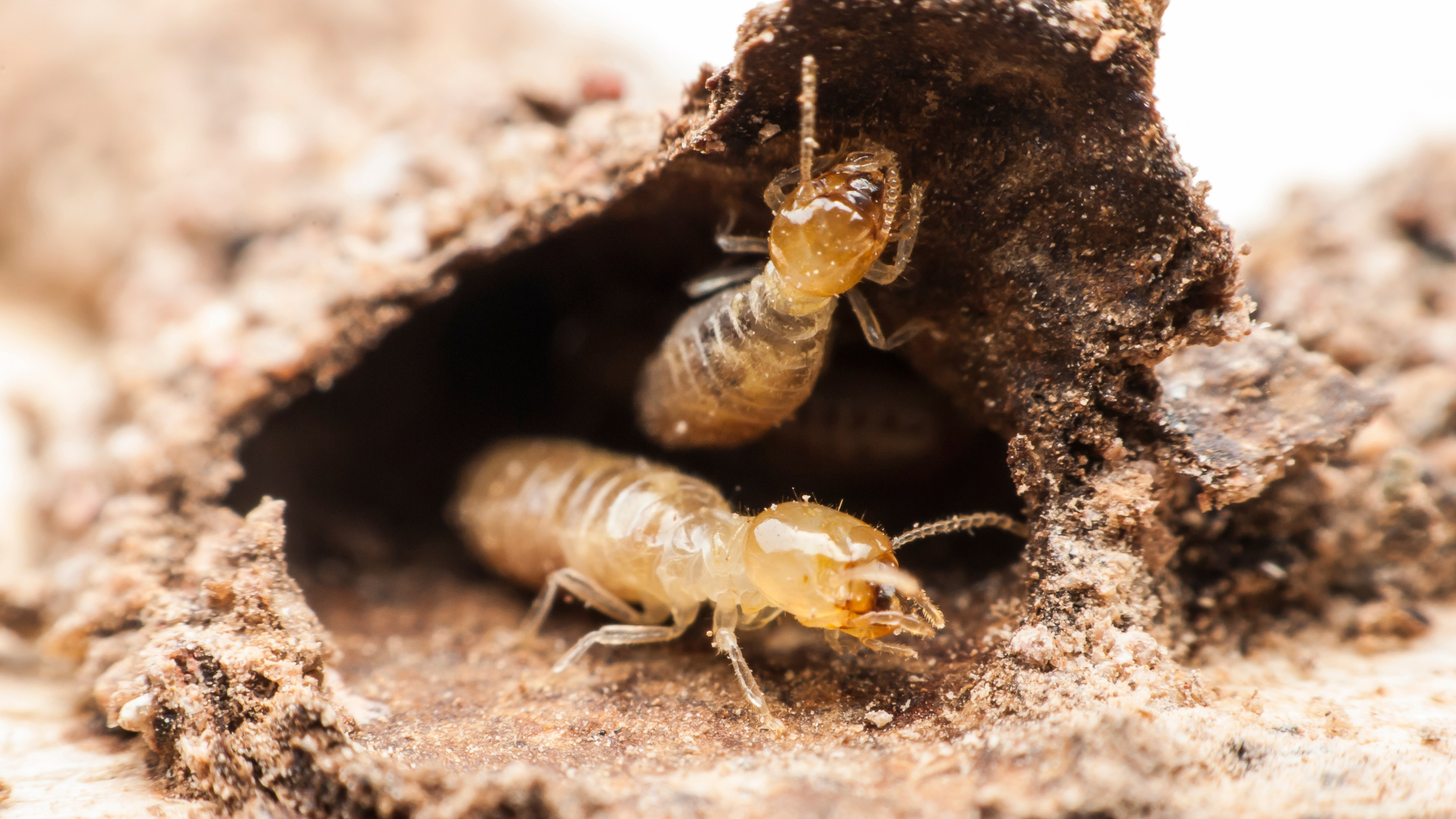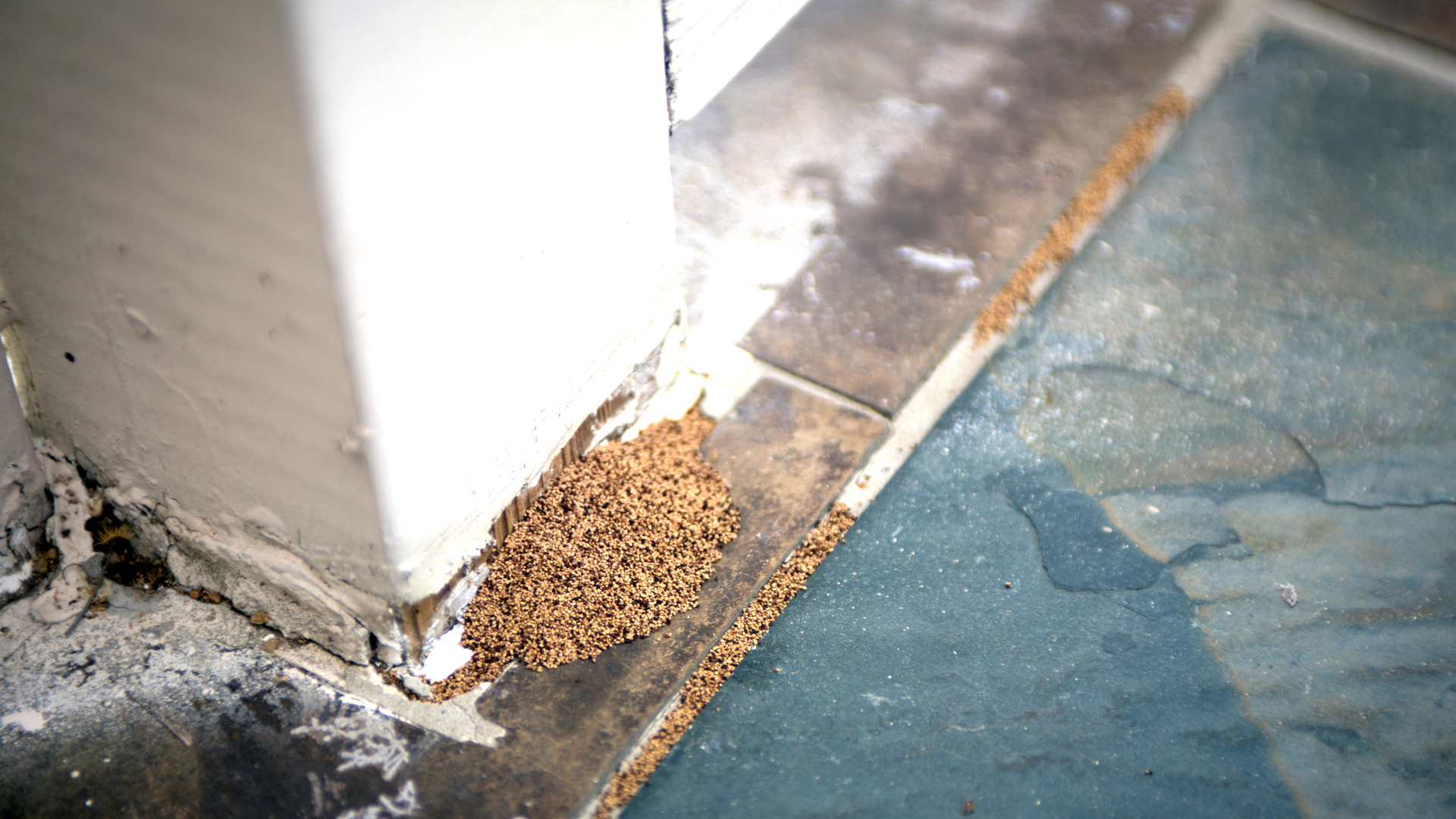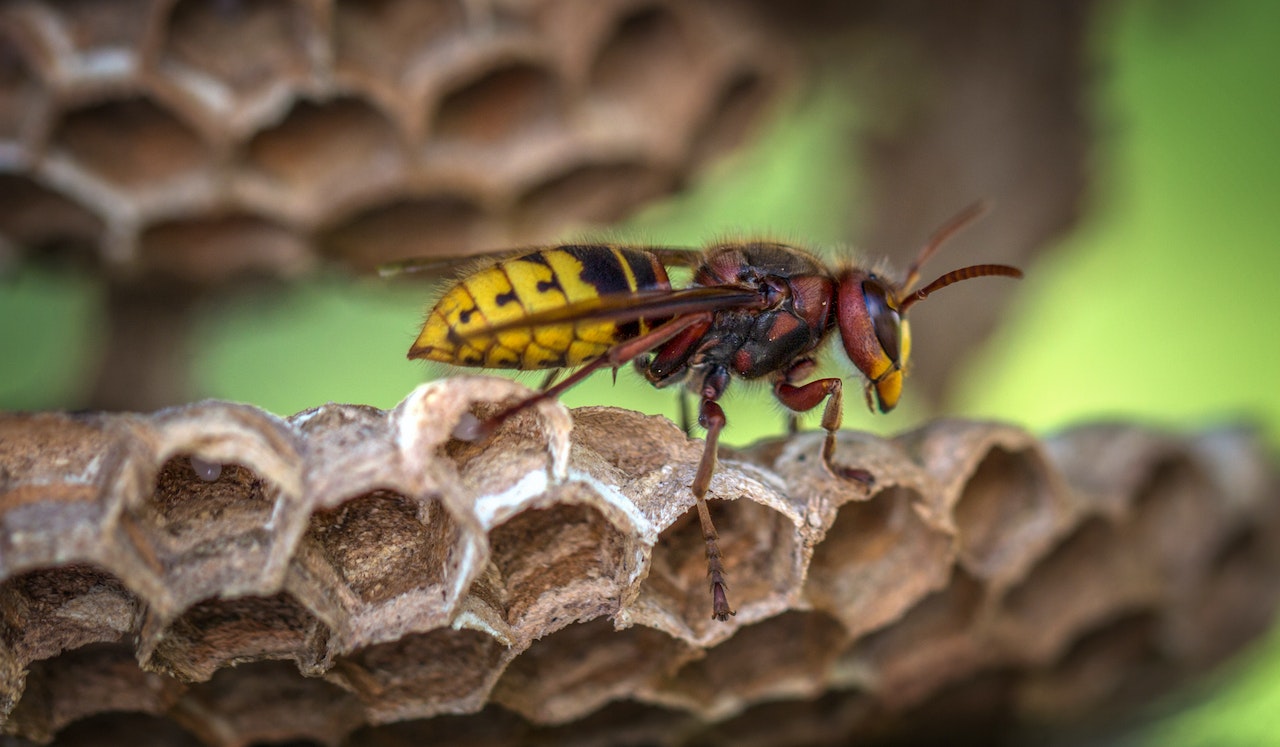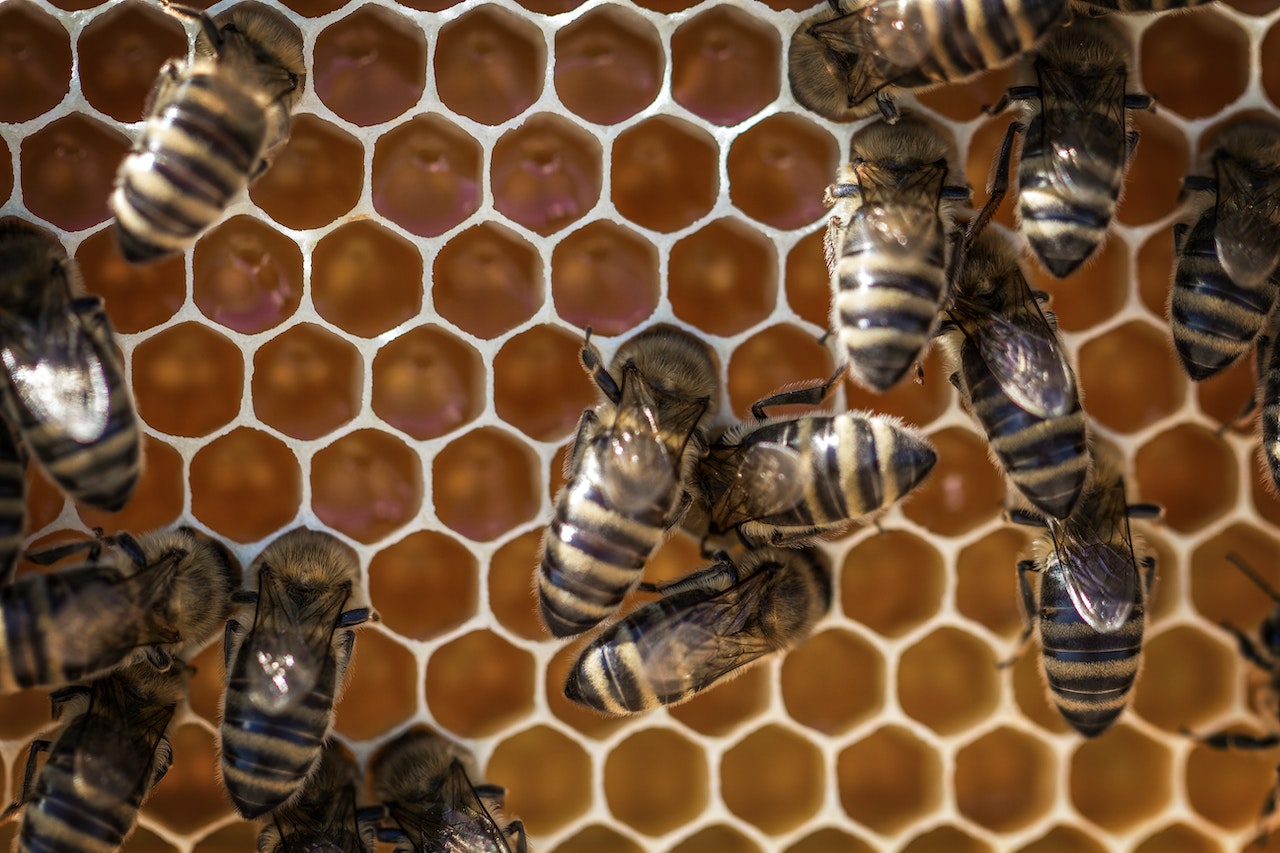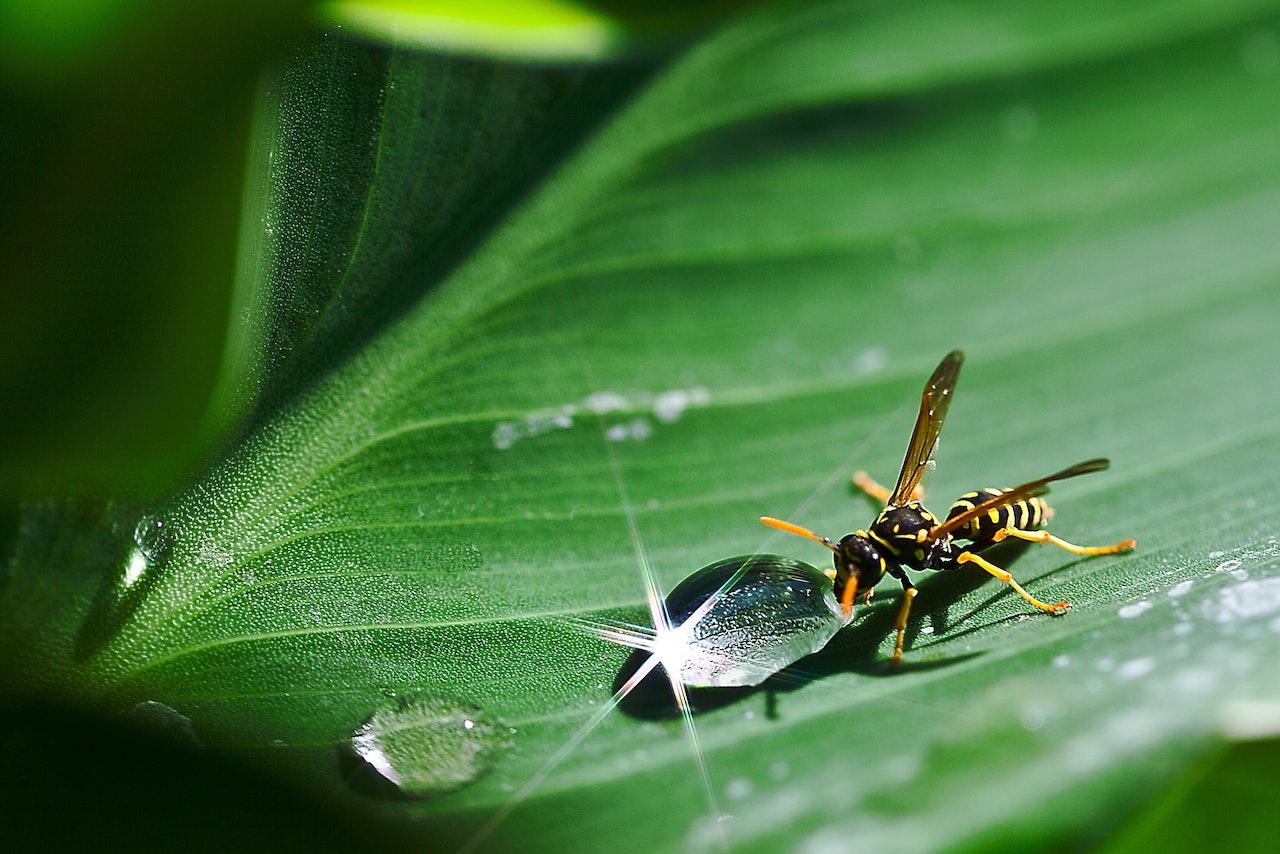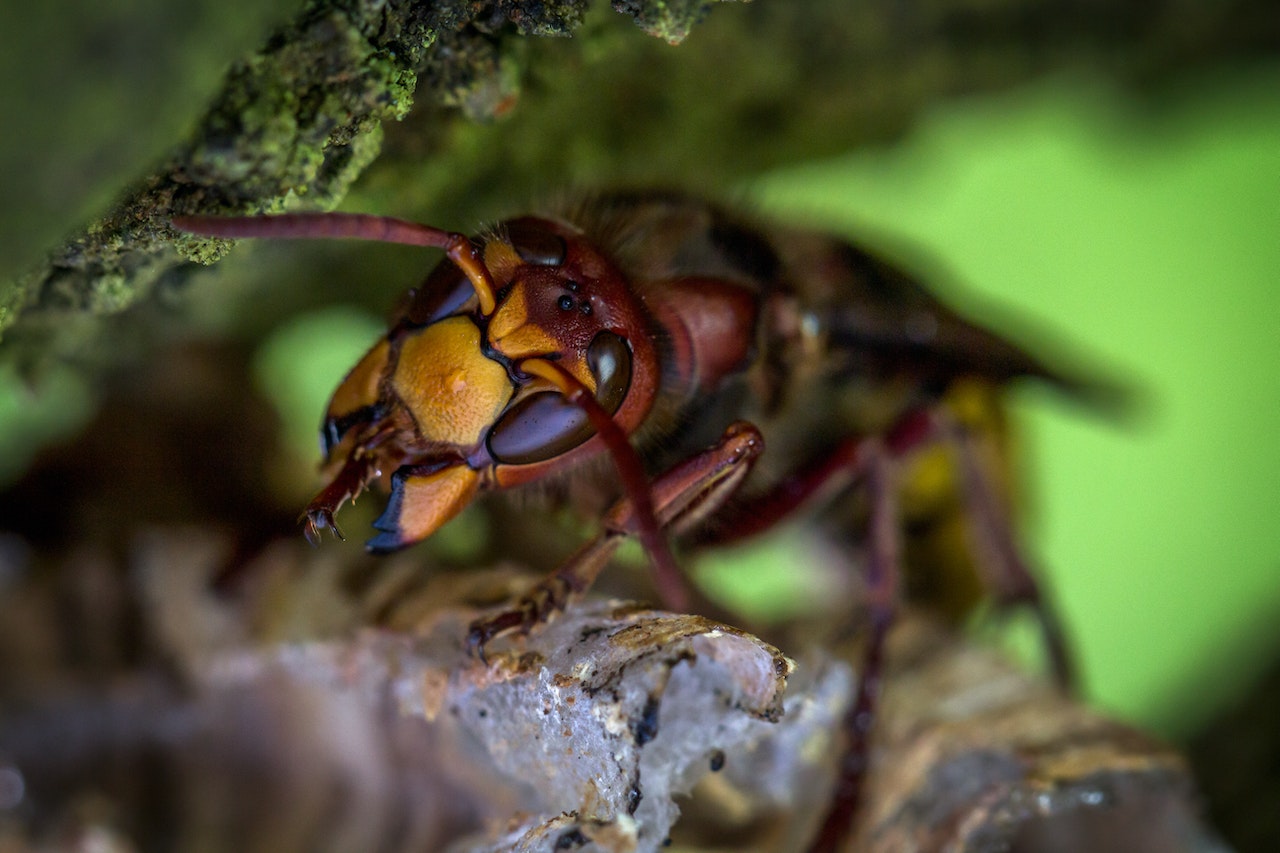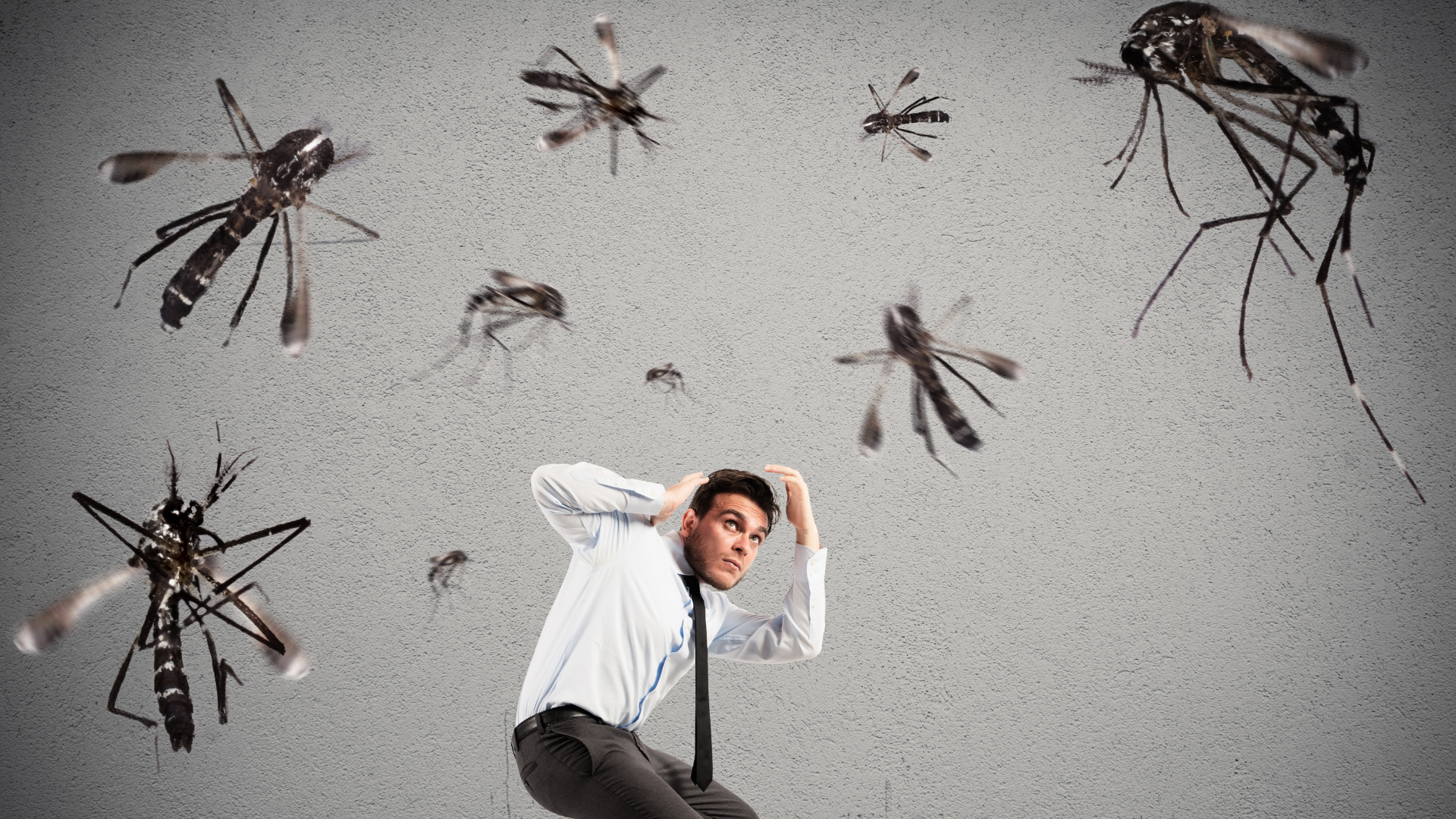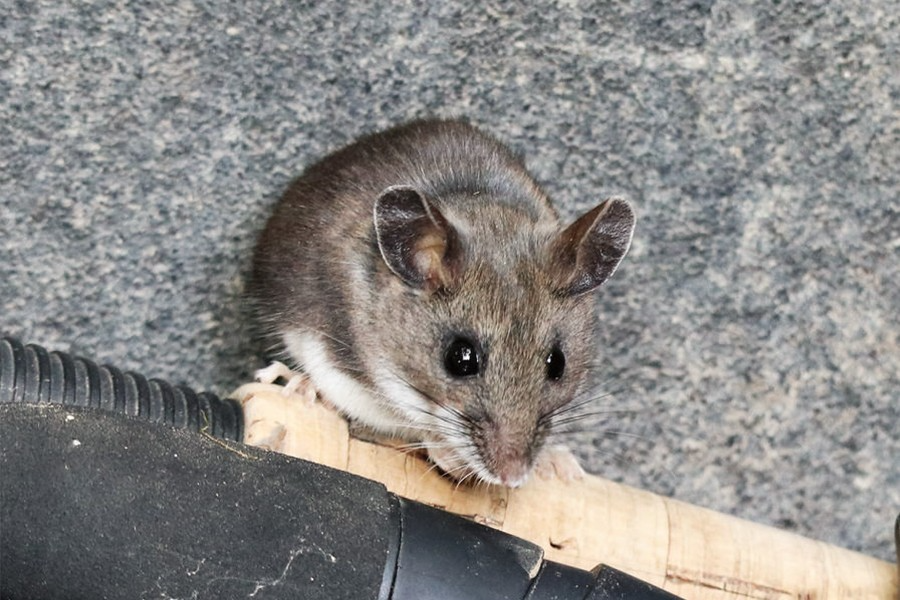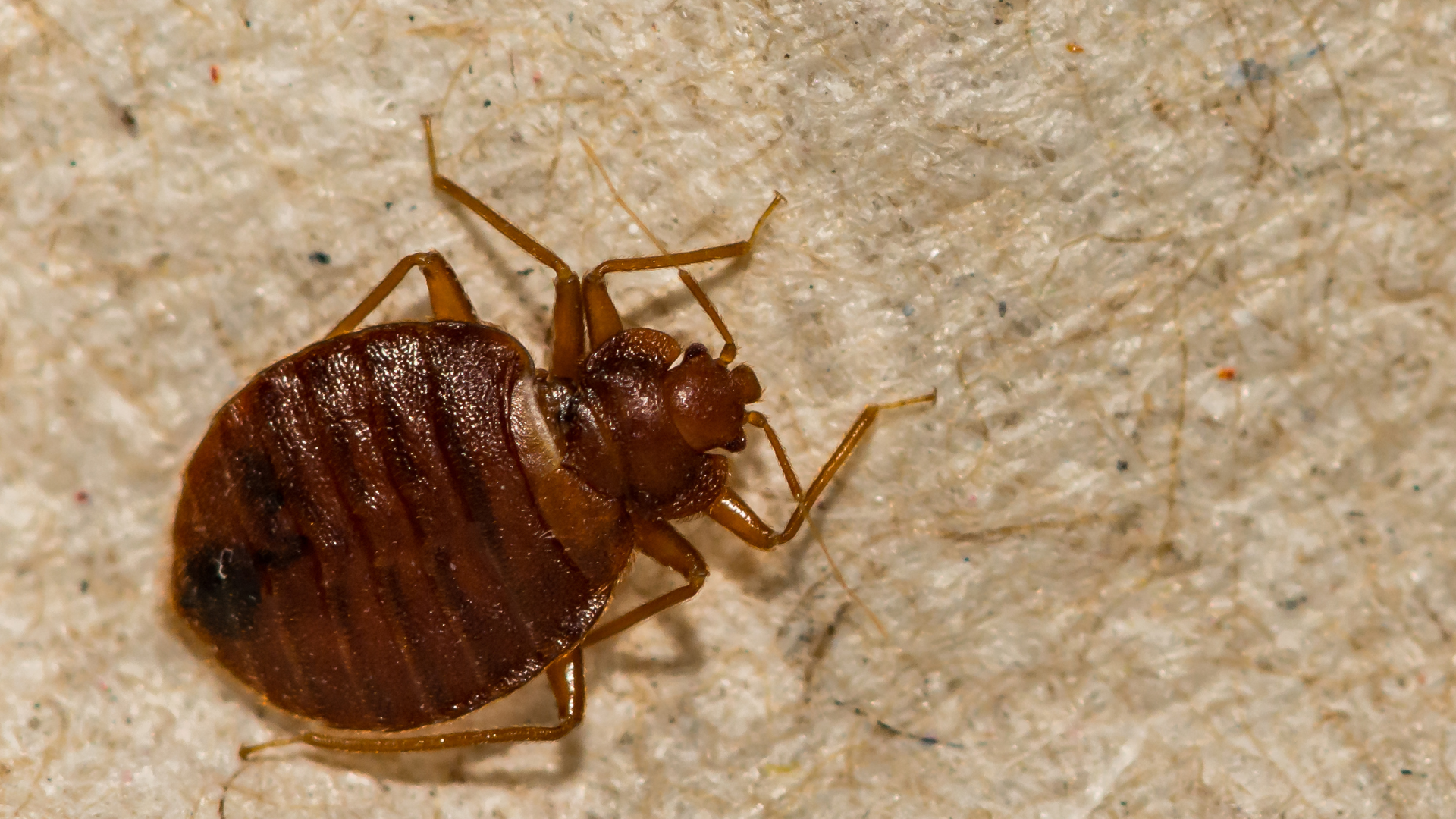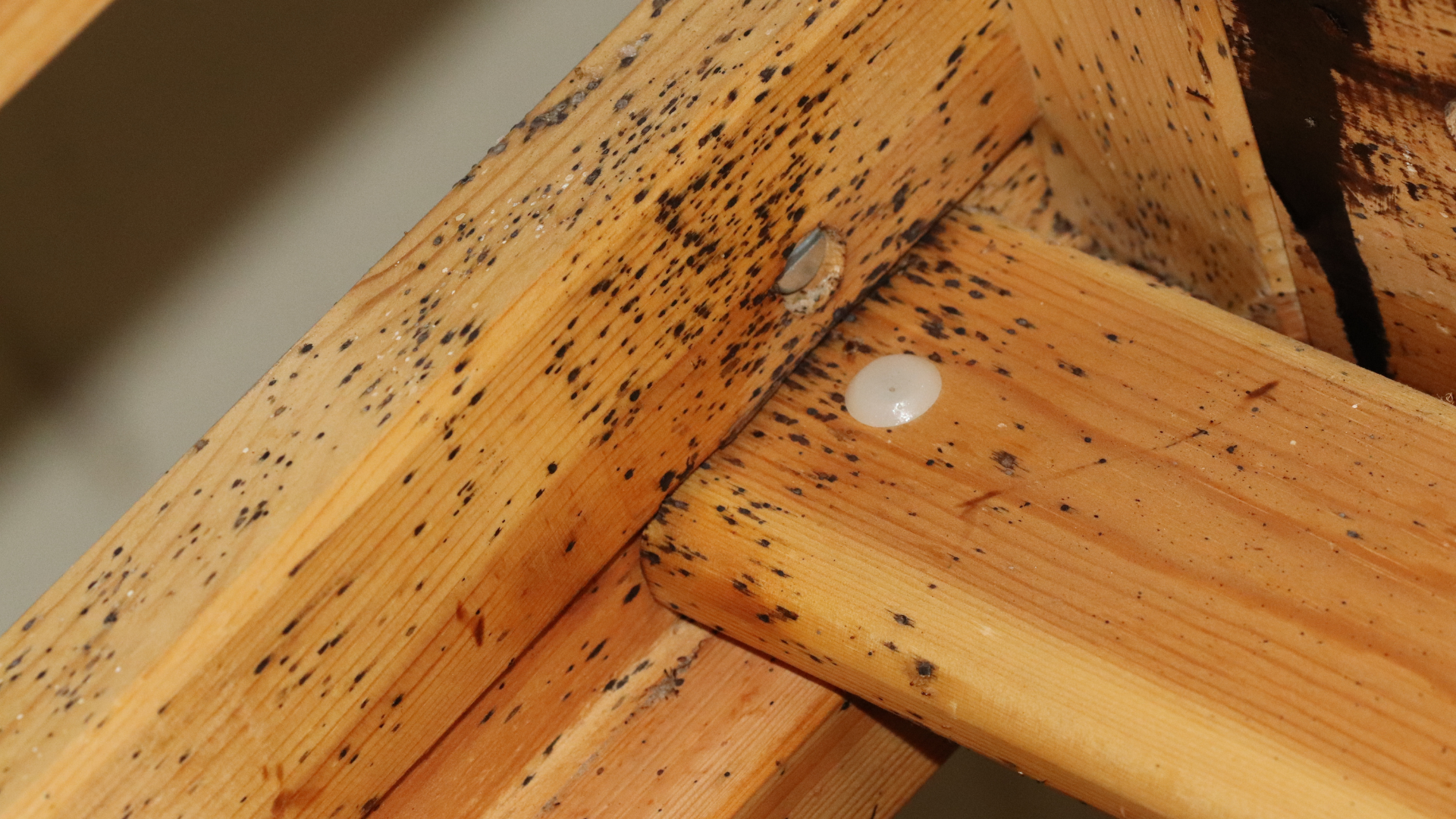Your Ladybug Guide: How to Get Rid of Them for Good
It’s safe to say that ladybugs are some of the cutest and most docile insects, with their bright red bodies and black polka dot pattern. However, they can quickly become a nuisance if not properly contained.
Here are some of the most frequently asked questions about ladybugs and a step-by-step guide to getting rid of them – for good!
Why Are Ladybugs in My House?
You will usually notice more ladybugs in your home during the winter months, as ladybugs tend to flock indoors to stave off the freezing cold. While not considered invasive, ladybugs can quickly add up if you have a crack or opening they can exploit.
Typically, seeing one ladybug isn’t cause for alarm, but if you are noticing large numbers of these bugs in your home, you may want to reach out to a professional pest control company.
Ladybugs do snack on insects, so seeing large numbers of ladybugs or beetles may mean that your home has more pests than you know.
What Do Ladybugs Symbolize?
In many cultures, it is believed that ladybugs symbolize luck and new beginnings. Some people also believe that ladybugs are a sign of fertility, and seeing a ladybug or having one land on you could mean that one’s family will soon be expanding.
Are Ladybugs Harmful?
Ladybugs are known for their friendly and harmless nature, as they do not draw blood or carry disease. Unlike stink bugs, they don’t release a horrible smell, and they tend to feast on insects, not plants. In fact, ladybugs are said to be beneficial to gardeners, as they prey on soft-bodied pests like aphids, which can destroy plants.
Ladybugs are very docile creatures and are not seen as threatening humans, pets, or plants.
How to Get Rid of Ladybugs: Step-by-Step
If you do find yourself with a large swarm of ladybugs, most infestations can be treated fairly easily, DIY.
1. Vacuum Your Floors
If you spot ladybugs in your home, the easiest way to remove them is by gently vacuuming them with the nozzle attachment on your vacuum cleaner. This will pick up the ladybugs without crushing them, and you can release them back into the wild afterward.
2. Seal Entrances
Sealing the entrances to your home is a crucial way to keep out pests of all kinds, including ladybugs. You can do this by inspecting your doors and window screens for any possible entryways and using a store-bought caulk to seal up any cracks or crevices in your home.
3. Use Diatomaceous Earth
For larger ladybug infestations, sprinkling diatomaceous earth where these insects travel can effectively kill them. Diatomaceous earth dehydrates insects that come into contact with the powder, making it an effective solution for dealing with many different pests.
4. Use a Light Trap
Light traps are also commonly used to manage household insects, including ladybugs. Light traps can be purchased for around $30 or less on Amazon or in-store at several different retailers and are a great alternative solution to using pest control chemicals.
5. Use an Essential Oil
There are several scents ladybugs are known to dislike, including citronella, lavender, lemon, and cloves. Using these scents in essential oil form can effectively deter ladybugs from hanging around your home.
6. Plant Lavender or Mums
Keeping lavender and mums inside and outside your home is another all-natural way to ward off ladybugs, as they hate the scents of these plants.
7. Seek Professional Assistance
When in doubt, it is always best to seek the help of a pest control professional to take care of an infestation of any kind. Anchor Pest Control offers preventative pest control plans to naturally repel ladybugs without harming you, your family, or your pets.
Contact our team of professionals for service in the tri-state area.
FAQs: Ladybug Pest Control
Can ladybug infestations damage property?
While ladybugs can infest homes in extreme cases, they are not known to damage property in any way. In large infestations, these bugs may stain carpets and upholstery with their secretions, but other than that, they are not thought to do serious property damage.
How can I tell if I have a ladybug infestation?
The biggest sign of a ladybug infestation is seeing a large number of ladybugs gathering together inside or outside of your home. Ladybugs will often gather on the sides of buildings and in the cracks of structures, so you may notice a large number of these insects congregating in these areas of your home. However, a pest control professional can assess the situation and determine whether or not you are dealing with an infestation.
Do ladybugs carry diseases?
Ladybugs do not carry any known diseases, and their presence in your home is unlikely to spread disease as well. Additionally, these insects do not draw blood, so even if they were to bite or pinch, you should not experience any adverse reactions.
Will ladybugs harm my indoor plants?
Ladybugs are not known to harm plants. In fact, these insects feed on other pests, like aphids, that harm plants by feeding on plant leaves.
Can I release vacuumed ladybugs back into the wild?
When vacuumed gently using the nozzle attachment on a vacuum cleaner, ladybugs can be released back into the wild.
How to Keep Yellow Jackets Away from Your Property
When it comes to common summertime insects, yellow jackets are some of the most feared and considered one of the most dangerous bugs in New Jersey. While these insects are extremely beneficial to our environment and work to pollinate flowers and feed on insects that would otherwise damage our gardens, yellow jackets are also known to become aggressive when provoked, even stinging multiple times.
While keeping yellow jackets away from your property is no easy feat, there are measures you can take to prevent them from hanging around your yard and interfering with your summer plans.
Identifying Yellow Jackets
Yellow jackets in New Jersey are black with distinct yellow markings on their head and abdomen, giving them the eponymous name of “yellow jacket.” These stinging insects can also be identified by their segmented body and thin waist, as well as their hairlessness compared to other types of bees. Typically, yellow jackets grow to about ½ to 1 inch long, so they tend to be on the smaller side compared to the similar-looking hornet.
The Risks of Yellow Jacket Encounters
Encountering a yellow jacket is no joke and can become even more serious if encountered in large numbers.
Yellow jackets are known to sting multiple times when provoked, and their venom can even cause allergic reactions in some people.
If you encounter a yellow jacket, try to walk away in a straight line, as moving around or swatting can draw more attention to yourself and may provoke these stinging insects to attack.
Common Yellow Jacket Attractants
Yellow jackets are particularly attracted to the smell of meat, which is why you may spot these flying insects hanging around backyard barbecues during the summer months.
When it comes to choosing yellow jacket bait, many people opt for canned white chicken meat, but other protein-based foods should also do the trick. Yellow jackets are also drawn to sweet substances such as juice and soft drinks, so be sure to check any open cans of soda left outside during the summertime!
Creating a Yellow Jacket-Free Environment
Eliminating Attractants and Food Sources
One of the biggest ways to create a yellow jacket-free environment is to eliminate all possible attractants and food sources. While coming into contact with a yellow jacket may sometimes be unavoidable, such as hosting a summer cookout, being proactive in ensuring food or drinks don’t sit out for an extended period is crucial in preventing yellow jackets from overstaying their welcome.
Proper Waste Management and Garbage Disposal
Properly disposing of garbage is another key way to keep yellow jackets away from your property.
Since garbage is one of the biggest attractants for yellow jackets, you will want to ensure you keep your garbage bags tied and the cans sealed to prevent these stinging insects from making themselves at home.
Planting Yellow Jacket-Repellent Herbs
Herbs like rosemary, lemongrass, peppermint, spearmint, and geranium are all known to keep yellow jackets at bay, so try planting these herbs around your home and garden if you are experiencing a large yellow jacket presence.
Essential Oils and Natural Sprays
Applying the scents from these herbs in essential oil form can also help keep these insects away. Adding a few drops of essential oil to a spray bottle combined with water and spraying it outside of your home can effectively prevent them from lingering around your property.
Building DIY Yellow Jacket Traps
Whether you’re on a budget or would simply prefer to try a DIY method, building your own yellow jacket trap can also be effective. A common DIY yellow jacket trap involves using an empty 2-liter soda bottle and adding sugar, water, apple cider vinegar, and a banana peel before shaking the mixture up.
Using a utility knife, cut a small opening in the bottle to give the yellow jackets room to enter. Next, simply place the trap near the hive and wait for the yellow jackets to enter and get caught.
Professional Yellow Jacket Removal
When it comes to getting rid of a yellow jacket infestation, Integrated Pest Management, or IPM, is one of the most effective methods. IPM is an ecosystem-based method for natural pest control that involves biological control, habitat manipulation, and a combination of both chemical and non-chemical practices. IPM has proven to be highly effective in eliminating pests of all kinds, including yellow jackets.
Most pest control professionals use a combination of IPM and organic insecticides to remove them from your property.
We should also note that yellow jacket removal can be a tough job and should be left to a pest control professional, as you could be putting yourself at risk of getting stung or the infestation returning if you try to take matters into your own hands.
FAQs
How can I differentiate yellow jackets from bees and other wasps?
While yellow jackets can be easily mistaken for other types of bees and wasps, there are some key differences to be aware of. Most notably, they have a distinct appearance that can help you identify them, such as their bold black and yellow coloring and their, segmented bodies and thin waist. Yellow jackets are also hairless, while some other types of bees have hair on their bodies. They are also smaller but thicker than wasps, which is important to note when differentiating the two.
What are some common attractants for yellow jackets?
Yellow jackets are most attracted to meat and other protein-based foods, such as grilled chicken, steak, and hamburgers. They are also drawn to sweet and sugary substances, like soda and fruit juices, as well as tree sap.
When should I seek professional help for yellow jacket removal?
If you discover a yellow jacket infestation near your property, you must act fast. Yellow jackets can be difficult to get rid of and can form multiple nests across your property. You will also increase the risk of being stung if you attempt to deal with the problem yourself. Seeking the help of a pest control professional is the best way to ensure that an infestation is taken care of quickly and safely.
How to Get Rid of Stink Bugs | 7 DIY Tips
Out of all of the common pests found in homes across the United States, stink bugs are some of the most annoying. Most Jersey residents are familiar with the Brown Marmorated Stink Bug, which loves to hide out over winter inside your house.
While stink bugs are relatively harmless to humans and pets, the foul odor they release when scared or killed can have many homeowners holding their noses and running out of the room.
Stink bugs are also known to invade in large numbers, making them particularly bothersome during the warmer months when they are the most active. If you find yourself dealing with these unwelcomed household pests, here are 7 DIY tips for getting rid of stink bugs once and for all.
Identifying Stink Bugs
Stink bugs can easily be identified by their unique shape and the distinct, foul odor they release when crushed.
Stink bugs have shield-shaped bodies and are typically brown in color, often bearing a speckled pattern. They also have smooth, rounded shoulders and light and dark brown bands on their antennae. These insects can reach nearly 2 centimeters in length, making them almost as wide as long.
You may also notice that stink bugs will often stand still for long periods of time, giving the impression that they are dead. This is a state known as diapause, which occurs when they cannot find a food source.
Though stink bugs typically come out during summer, they can also survive the winter. Therefore, understanding how to get rid of stink bugs is important for year-round protection.
7 Tips to Get Rid of Stink Bugs
1. Homemade Stink Bug Traps
There are several homemade stink bug traps that can effectively eliminate these pests, with one of the most popular being the foil pan method. To try this method, simply fill a foil roasting pan with water and dish soap and shine a small desk lamp onto it. The light will draw the stink bugs to the trap, and once they enter, they will not be able to escape.
2. Natural Stink Bug Repellents
Stink bugs are known to dislike certain natural smells, many of which could be found in essential oil form. Essential oils like spearmint, lemongrass, and ylang-ylang have been shown to keep stink bugs away, so diffusing these oils around your home or mixing them with water in a spray bottle can effectively ward off these pests.
3. Eliminate Food Sources
Stink bugs are attracted to moisture and food scraps, so eliminating these possible food sources from your home can help keep stink bugs at bay. One of the biggest ways to do this is by storing food in airtight containers and disposing of garbage promptly. It may also be a good idea to purchase an airtight garbage can, as stink bugs will be less likely to smell your garbage when it is properly stored.
4. Reduce Moisture
As mentioned earlier, stink bugs are drawn to moisture, so be sure to watch for any leaky faucets or pipes in your home. You should also avoid having a lot of dirty dishes in the sink, and be sure to drain the water from your sink or bathtub immediately after use to prevent stink bugs from hanging around.
5. Seal Cracks
Stink bugs can make their way into your home through cracks and crevices in your walls, so it may be a good idea to inspect your walls, windows, and doorways for any possible entryways. Using caulk to seal any cracks found in your home can be extremely effective in preventing these pests from invading your space.
6. Insecticidal Soaps and Oils
Many people look to insecticides and oils to keep stink bugs at bay. Neem oil for stink bugs is a popular option, as it is a more natural solution and kills stink bugs by interfering with their behavior. When stink bugs ingest neem oil, they are tricked into feeling that they are no longer hungry and will eventually die. Other stronger insecticides are also commonly used, but it is important to note that these harsh chemicals should only be applied by a pest control professional to ensure the problem is handled safely and effectively.
7. Landscape
Keeping the outside of your home neat and well-landscaped is important for keeping all kinds of pests out of the house, including stink bugs. During the summer months, regularly cut the grass and pull any stray weeds for the best chance of protecting your home from intruders. If there are trees near your house, trimming the branches and cleaning out your gutters can also effectively reduce your chances of seeing stink bugs in your home.
Should I Squish Stink Bugs?
If you see a stink bug in your home, do not crush it. Doing so will release the foul odor activated when the insects are frightened or killed, and the smell could be overpowering. Instead, opt for one of the methods mentioned above to safely kill stink bugs without subjecting you and your loved ones to this pest’s offensive odor.
While DIY home pest control is effective against stink bugs on most occasions, don’t hesitate to reach out to a qualified stink bug exterminator for help.
FAQs
Can stink bugs harm humans or pets?
While stink bugs may look intimidating, these insects are generally harmless to humans and pets. Besides their offensive odor, most species of stink bugs cannot bite or sting and are not poisonous if your cat or dog accidentally ingests one.
How can stink bugs damage crops and gardens?
Stink bugs can be extremely damaging to crops and gardens, as these pests are known to pierce through plant leaves, buds, and fruit and suck the sap or juice from them. This can stunt plant growth and create holes in fruits and vegetables, sometimes even killing seedlings, depending on how much damage was done.
Can stink bugs trigger asthma or allergies?
Stink bugs have been known to trigger asthma or allergies in individuals sensitive to the bugs’ odor. This reaction can be similar to that of a cockroach or beetle allergy, so it is important to take care of a stink bug infestation before it gets out of control.
What are some natural predators of stink bugs?
Some of the most common natural predators of stink bugs include spiders, bats, birds, and assassin bugs. Predatory stink bugs are also known to feed on their less harmful counterparts, the plant-feeding stink bugs.
How to Get Rid of Termites for Good | Anchor Pest Control
Termites cause billions of dollars in property damage each year, making them some of the most disastrous and hard-to-eliminate pests. Worst of all, many can live undisturbed in your home for several years before being discovered.
Educating yourself about the telltale signs of termites will help you prevent home damage and act quickly to eliminate termites. Here are some important signs of a termite infestation, as well as the best ways to get rid of them for good using DIY or professional treatment methods.
Identifying Different Types of Termites
The two most common types of termites are subterranean and drywood. Subterranean termites live in large colonies underground, while drywood termites are found in wood above the ground.
Subterranean termites typically reside on the east coast and are smaller, with a darker head, than drywood termites.
Most termites are typically ¼ to 1.2 of an inch long, with straight antennae and ranging in color from white to dark brown. Kings and queens are on the larger side, and swarmers–termites who leave their colonies to find mates and form new colonies–are distinguished by their wings.
Signs of a Termite Infestation
Though both termites may act differently, you’ll be able to spot them through these telltale signs of a termite infestation.
Mud Tubes
Mud tubes are small, pencil-sized tunnels built by termites out of wood and dirt to connect colonies and shield themselves from predators. Seeing mud tubes around your home is often the first sign of a termite infestation for many people, and these tubes can be easily identified by conducting routine termite inspections. Look around basements on exterior walls for mud tubes that connect termites to their hiding spots.
Wood Damage
Wood damage to a home is another sign of a termite infestation, as these pests are known to chew through wood floors, framing, and porches. Unlike Carpenter Ants, termites actually burrow into wood and deliberately damage structures. Buckling wood, pinholes in drywall, and sunken areas on the floor are other common signs that termites are damaging your home's framing.
Sticking Doors
Termites produce moisture when they feed, which can cause windows and doors to stick together. However, it is important to note that sticking windows and doors are not a definite sign of a termite presence, as the hot summer months can also cause this to happen. If you have noticed other signs of termite damage to your home, it may be worth looking into.
Frass
Frass, also known as termite droppings, can easily be mistaken for dirt or wood shavings. As termites make their way through wood or drywall, they will kick their droppings out of the holes they are creating, so if you notice piles of frass around your home, contact a pest control professional promptly.
Paint and Drywall Bubbling
Since termites produce moisture when they eat, they can cause paint and drywall to bubble. If you notice the paint in your home looking strange or warped, it may be time to reach out to a pest control company to confirm a termite infestation.
Discarded Wings
Once male termites find mates, they will break off their wings to communicate to other termites that they are taken. If you notice discarded insect wings around your home, it may be a sign that you are dealing with a termite infestation.
Live Termites
Spotting live termites in or around your home is an obvious sign of a termite infestation. Termites can be easily mistaken for flying ants or other insects, so it is important to know how to identify them in order to treat a potential problem (see above).
Top Termite Treatment Options
Once you know for certain that termites are in your home, it’s time to act fast. Termite treatment costs are usually more affordable than the cost of repairing a damaged home. Consider these treatment methods to get rid of termites for good.
Termiticides
Termiticides are chemicals that kill termites by baiting them and are known to be highly effective. Termiticides are some of the most commonly used treatments for termites and come in both liquid and foam forms that are not harmful to people or pets once dry.
Some of the most common termiticide brands are Spectracide, ORTHO, and BioAdvanced, as these are all products you could purchase in-store and apply yourself. However, it is important to note that termiticides are safest when applied by a professional, especially considering how difficult it can be to get rid of termites.
Termite Barriers
Termite barriers can be effective at treating a current termite infestation as well as preventing these pests from entering your home. There are two main types of termite barriers: chemical barriers and physical barriers. Chemical barriers involve using a liquid chemical beneath the ground to create a barrier around a home. Physical barriers are obstacles that physically prevent termites from entering your home, typically made of metal or mesh.
Termite Baits
Termite baits work by luring termites to consume the bait before traveling back to their colonies and killing the rest of the termites. Termite bait stations are typically hollow plastic tubes with holes on the sides that are placed in the ground to allow termites to enter them. The bait inside the bait stations is made out of small wood-like particles that attract termites and are known to be highly effective in eliminating these pests.
Boric Acid
Boric acid is a commonly used solution to get rid of termites. Boric acid can be applied by spraying it into the cracks and crevices of floors and walls in your home, and is thought of as a less harmful way to kill pests. Boric acid dehydrates termites, causing their nervous systems to shut down.
Neem Oil
Neem oil is another non-toxic solution to getting rid of termites, though it is important to note that this method is not as effective as the other methods mentioned in this list. Neem oil kills termites slowly by preventing their ability to shed their skin or lay eggs. However, in order for neem oil to kill termites, they need to come in contact with it first, which can be tricky.
Diatomaceous Earth
Diatomaceous earth is a powder-like substance that is safe for humans to ingest and can also kill many household pests, including termites. To use this method, simply sprinkle diatomaceous earth on areas where you suspect termites. When the termites walk on top of the powder, it will penetrate their exoskeleton and dehydrate them.
While these termite treatment methods can be effective, nothing beats the efficiency and certainty of hiring local termite control services. Anchor Pest Control can handle any termite infestation quickly and safely using integrated pest management tactics that are safe for you and your family. Call us today for a free quote if you live in the tri-state area.
FAQs
Why are termites difficult to get rid of?
Termites tend to swarm in large colonies and can regenerate even if a queen perishes. This means termites have to be eliminated entirely, requiring more extensive pest control methods.
What draws termites out?
If you’re looking to spot termites, look for wet areas of your home where water has pooled. This is where most termites will dwell as they scavenge your home for food.
What kills termites quickly?
Most termiticides are designed to kill termites quickly, but boric acid is another fast-acting and natural solution.
How to Identify Each Stinging Insect and Protect Yourself
There are many reasons to love the summer months, from the warm weather and longer days to the general carefree feeling in the air. However, one of the more unpleasant parts of summertime is the resurgence of bugs like mosquitos and stinging insects.
While most stinging insects play an important role in our ecosystem, it doesn’t change the fact that many of us go running in the opposite direction at the first sight of a wasp. Insect sting allergies are also fairly common, with 5% to 7.5% of Americans having a hypersensitivity to these pests’ venom.
Therefore, knowing how to identify each common stinging insect is essential for protecting yourself and your loved ones this summer. Learn about the different stinging insects you may encounter and how to avoid getting stung.
Honey Bees
Honey bees can be identified by their thick, oval-shaped bodies with dark brown hair and yellow stripes. Honey bees are extremely important to the environment and pollinate $15 billion worth of crops in the United States each year, according to the U.S. Department of Agriculture. Honey bees prefer to reside in natural environments such as gardens, orchards, and meadows, and these bees are typically regarded as very docile insects that will only sting when provoked.
Carpenter Bees
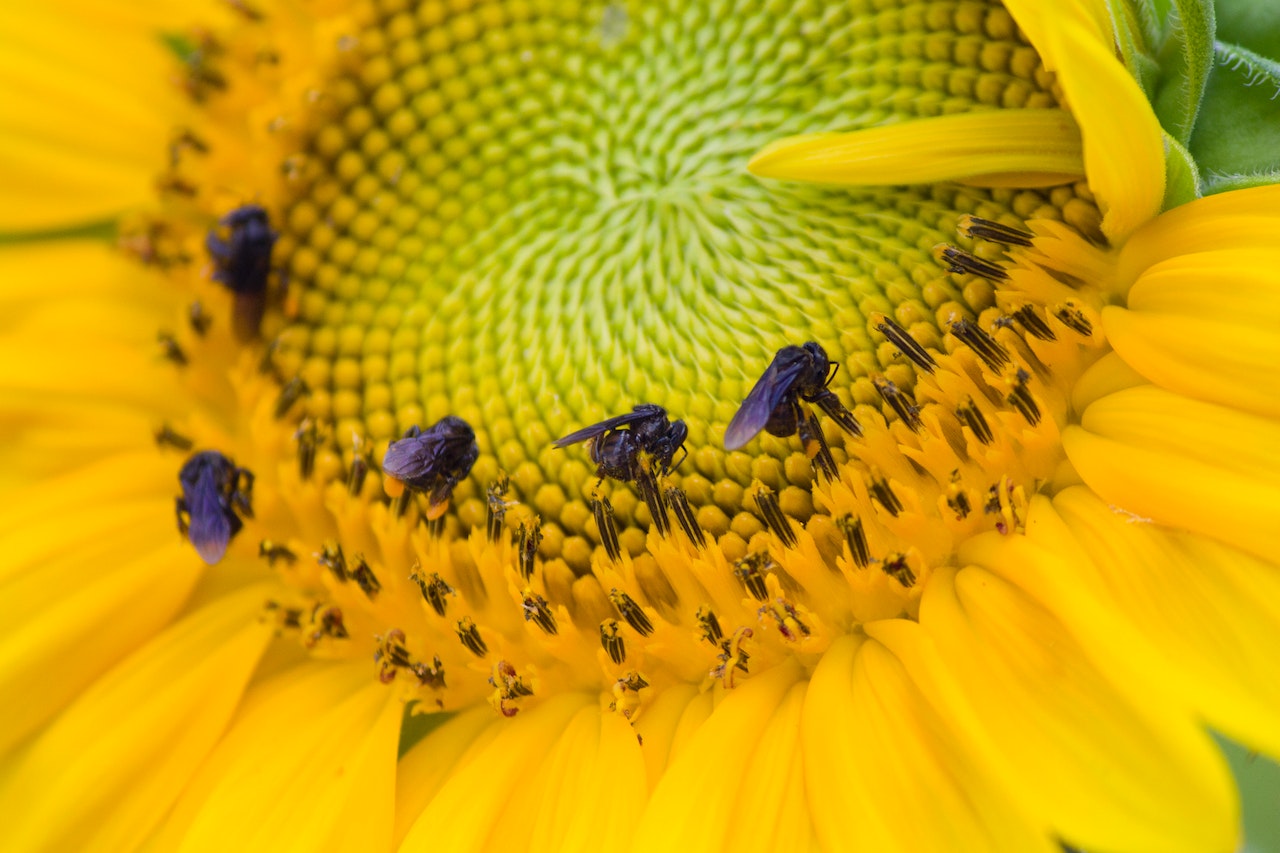
Carpenter bees resemble large bumblebees and have round bodies with smooth, black abdomens. They are similar to honey bees in temperament and their ability to pollinate, but they can cause a lot of damage to wooden structures by boring into wood to create their nests. Carpenter bees prefer to nest in unpainted, weathered wood and are especially drawn to softer woods like pine and cedar.
Wasps
Wasps are typically thin, hairless insects with three distinct body parts: a head, a thorax, and an abdomen. Wasps consist of a large category of stinging insects, including hornets, yellow jackets, and paper wasps. These critters will become aggressive with humans if they feel that their nest is being threatened or their food supply is low, which is why your best bet is to avoid the area surrounding a wasp nest to avoid getting stung. Wasp nests built above ground can typically be found in bushes, trees, or attics.
Hornets
Hornets have reddish-brown heads and thoraxes and can be identified by their thin waists. Unlike the previous insects mentioned, hornets are known to be aggressive and can swarm in large numbers when provoked. Hornets prefer to nest on the branches of trees and shrubs but tend to spend the winter months nesting in the crevices of home siding and rotten logs.
Yellow Jackets
Yellow jackets are black in color with distinct yellow markings on their head and abdomen. Yellow jackets are among the most aggressive stinging insects, and they are known to target honey bee hives and eat their bees and larvae. These insects can also sting multiple times, making them one type of pest you don’t want to mess with. Yellow jackets prefer to nest on the forest floor, as well as on rock walls and sometimes inside structures.
Mud Daubers

Mud daubers are lesser-known wasps that travel solo to build mud nests consisting of tubes on an exposed surface. Unlike other types of wasps, mud daubers are not easily agitated and are not known to sting, even when provoked. Mud daubers are thin and black in color and have what is known as a “thread waist,” referring to the long, skinny segment between the thorax and abdomen.
Tips to Prevent Getting Stung
Not all stinging insects are aggressive, but it doesn’t mean you shouldn’t take proper precautions.
- Wear Long Clothing – One of the best ways to protect yourself from getting stung by a stinging insect is to wear long clothing when spending time outdoors. This is especially important if you plan on spending an extended period of time doing outdoor activities like gardening or hiking. Be sure to tuck your pants into your boots, keep your sleeves pulled down, and wear gloves while gardening for the best chance of protecting yourself.
- Avoid Perfumes – Perfumes and strongly-scented body products can attract stinging insects, so it is best to avoid using these products if you’re planning to spend time outdoors. In addition to perfumes, insects may also be attracted to scented body lotions, shampoos, and even flavored lip glosses, so it may be in your best interest to skip the fragranced products and opt for unscented ones.
- Bathe Daily – Insects are attracted to strong odors, so be sure to bathe daily to avoid these pests. Wearing clean clothing is also important for this reason, as stinging insects are more likely to linger near you if you have a strong scent.
- Avoid Flowering Plants – Stinging insects are known to hang around sweet-smelling flowers, which is why you will typically see more of them during the summer months when plants and flowers are in full bloom. When gardening or hanging out in the backyard, be sure to be aware of your surroundings and try to avoid stinging insects like wasps and hornets, as they may become aggressive if you enter their space.
- Contact an Exterminator – Contacting an exterminator is typically your best bet when dealing with stinging insects. While many of them, such as honey bees, are known to be generally docile, wasps can quickly become a nuisance and put you and your loved ones at risk of being stung. An experienced pest control professional will be able to assess the situation and recommend the best course of action.
FAQs
How do I know if I was stung or bitten?
In most cases, it can be difficult to differentiate a sting from a bite. Most insect bites release salvia, which causes redness and irritation. Venom from a sting can do the same thing, but it will be less pronounced. Ultimately, if you have an allergic reaction, you were most likely stung by an insect.
What is worse? A yellowjacket or hornet?
On average, yellow jackets are more aggressive and feature a smooth stinger, which can sting repeatedly and painfully.
Why do bees sting unprovoked?
Honeybees will defend their colony and sting if they feel you are a threat to their habitat.
How to Get Rid of Mosquitoes | Prevention and Removal
There are many things to love about the warm summer months, from sunny days at the beach to the cheerful sound of the ice cream truck driving down the street. However, there are some aspects of summer that aren’t so pleasant, including mosquitoes.
While getting a couple of mosquito bites during the summer months is to be expected, these flying pests can be dangerous to humans due to the many diseases they carry. According to the CDC, there are over 200 types of mosquitoes in the United States and US territories, and 12 of these types of mosquitoes carry diseases that can be harmful to humans.
Mosquitoes may rightfully be called one of the most dangerous bugs in New Jersey, especially since they can carry deadly disease.
This summer, don’t let you and your loved ones get eaten alive. Keep reading to learn how to get rid of mosquitoes so you can have a fun and relaxing summer.
How Dangerous Are Mosquitoes?
While most mosquito bites are relatively harmless, these pests often carry diseases like West Nile Virus, Zika Virus, and Malaria. Mosquito bites can also be dangerous to people who have an allergy to them, such as Skeeter Syndrome, which is a large allergic reaction to mosquito bites that causes significant inflammation.
Additionally, pregnant women should try to avoid coming into contact with mosquitoes as much as possible, as the diseases they spread can be harmful to both mom and baby.
How to Avoid Mosquito Bites
Due to the prevalence of diseases that mosquitoes carry, it’s critical to avoid mosquito bites as much as possible. Here are some tips:
- Limit time spent outdoors at night
- Use bug spray to deter mosquitoes
- Wear long sleeves at night
- Try to stay cool– mosquitoes are attracted to pheromones in sweat
- Eliminate standing water around your home
- Avoid wearing too many scented products
- Burn citronella candles when spending time outdoors
- Use a fan to get rid of mosquitoes: Fans can disrupt their flights, making it difficult for them to land.
How to Get Rid of Mosquitoes in Your Yard
Mosquitoes can generally strike inside or outside your home. For this reason, we divided our mosquito prevention tips for both areas.
Here are some tips to get rid of mosquitoes in your yard.
- Remove standing water- Bird baths, water fountains that are not being used, and kiddie pools are all great places for mosquitoes to dwell.
- Clear debris and clutter- Things like piles of dead leaves, tree branches, overgrown vegetation, and even lawn furniture can attract mosquitoes to your yard
- Grow Mosquito-Repelling Plants- Plants like citronella and lavender are known to deter mosquitoes.
- Use an insecticide- Apply only to areas where you frequently see mosquitoes to minimize any negative effects.
- Introduce natural predators- Hang bird feeders around your yard; birds are known to feed on mosquitoes.
How to Get Rid of Mosquitoes in Your Home
In rare instances, a mosquito can enter your home. Fortunately, there are ways to prevent this.
- Purchase door strips to seal any possible entryways and prevent mosquitoes from entering.
- Inspect your air conditioning unit; leaking or pooled water from your A.C. can attract mosquitoes.
- Keep mosquito-repelling plants inside. Keeping a potted lavender or citronella plant on your windowsill can deter mosquitoes.
- Use the soap and water method. Fill a dish with a combination of dish soap and water and put it in rooms where you have seen mosquitoes to catch and kill them.
As always, preventative pest control will be your best option to control mosquitoes. But when that doesn’t work, you’ll need to call in the experts.
When to Call a Mosquito Control Expert
Seeing the odd mosquito in your home isn’t usually a big deal, but if you begin to notice several of these pests flying around, you may want to contact a mosquito control expert to take care of the problem. Being that mosquitoes can carry a number of dangerous diseases, a mosquito infestation is not something to take likely. Call a trusted pest control company at the first sign of a problem.
FAQs
What smell do mosquitoes hate?
Citronella is one of the most universally recognized mosquito-repellent scents, with many people opting to burn citronella candles or even grow citronella plants outside of the home. In addition to citronella, mosquitoes are also known to dislike the smell of lavender, lemongrass, and lemon balm, so burning candles with these scents or even dabbing essential oils on your wrists can help deter these pests from biting you.
Do dryer sheets repel mosquitoes?
People have been using dryer sheets for years as a DIY way to repel mosquitoes, but there is little evidence to support this practice. Still, it doesn’t hurt to try. To use the dryer sheet method, simply rub scented dryer sheets on your arms and legs before going outside– the dandruff-like powder the dryer sheets leave behind is said to prevent mosquitoes from landing and sucking your blood.
Do mosquito bracelets work?
Mosquito bracelets are great options for people who don’t want to be bothered with applying bug spray before going outdoors. Mosquito bracelets contain scents that are known to deter mosquitoes, such as citronella, lavender, and lemongrass, and can be worn for several days before the scent wears off. However, these bracelets are typically not as effective as traditional bug sprays, so you may not get the same amount of protection when wearing these bands.
What to Do About Those Tiny Ants In Your House
Ants are some of the most common household pests, as there are over 12,000 species found across the planet that range in color and size from big black ants to tiny ants that spread quickly.
While some ants are more destructive than others, tiny ants tend to be the most difficult to contain.
These ants tend to show up on countertops, bathroom floors, and even occasionally moseying across your bedroom.
Let’s explore some reasons you may be finding tiny ants in the house and provide some tips we’ve used in the field to successfully eradicate tiny ants.
Types of Tiny Ants
Some of the most common tiny ants you may see around your home include:
- Acrobat Ants: These black ants with a red thorax get their name from acrobatically raising their abdomen above their head when disturbed.
- Odorous Ants: Commonly referred to as sugar ants, these small black ants tend to establish several sub-colonies that allow them to multiply quickly.
- Big-Headed Ants: These reddish ants with large heads tend to be fairly innocuous but may find their way into your home occasionally.
- Thief Ants: Thief ants are reddish ants that tend to steal food from other ant colonies. They have been known to contaminate food packaging.
Why Are Tiny Ants in My Home?
Ants typically make their way inside in search of food and water, and they can enter through even the tiniest of cracks and crevices. Once they are in your home, they will seek food and water from a variety of sources, including:
- Rotting fruits and vegetables
- Open garbage bags
- Greasy counter surfaces
- Leaky faucets
- Open pet food
- Unsealed food (especially sugary and sweet food)
Unfortunately, getting rid of tiny ants when they enter your home is difficult, but there are lots of effective solutions you can apply.
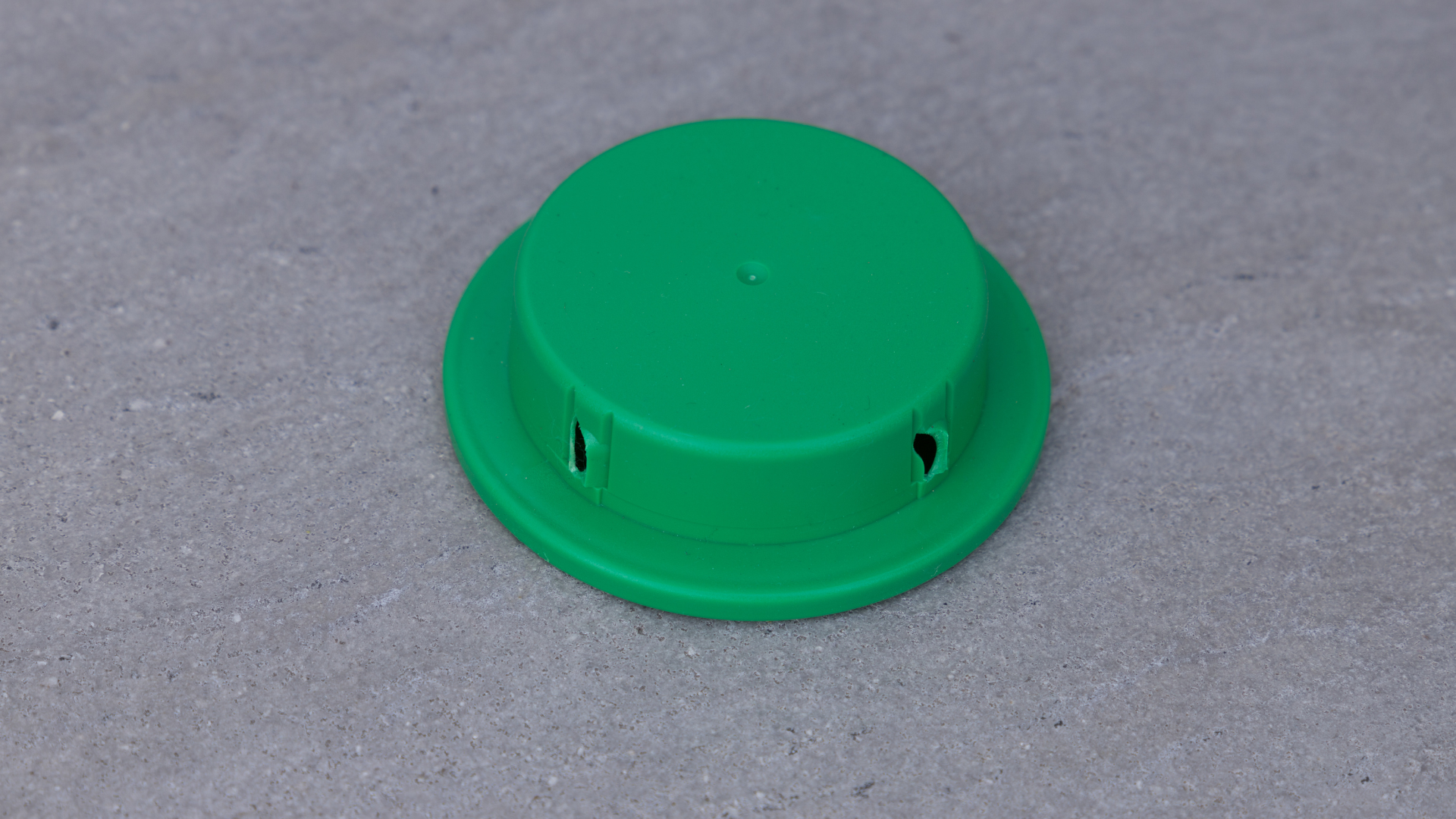 How to Get Rid of Tiny Ants
How to Get Rid of Tiny Ants
Non-Toxic Solutions
There are several all-natural pest control solutions for getting rid of ants that won’t harm your family or pets. Using a mixture of water and dish soap is one popular method, as this combination will stick to ants and suffocate them to death. You can also add neem oil to this mixture for extra ant-fighting strength.
Diatomaceous earth is another commonly used method for getting rid of ants and can be applied by sprinkling the powder on areas where ants frequently hang out in your home. These products are great for stemming an existing infection, but you may have to resort to insecticides and traps if you keep finding ants in your home.
Traps
Ant traps are easy to set up and are not only good at getting rid of carpenter ants, but they can effectively kill the tiny ants in your home. These traps come in a variety of different options and can be purchased at most home improvement or drug stores.
The most effective baits, such as Terro Liquid Bait, attract ants and their workers, which then bring back the poison to their colonies, wiping them out slowly over time.
Still, it is important to note that you should place ant traps in areas that are out of reach from any small children or pets, as they can contain toxic chemicals.
Insecticides
Brands like Raid, Spectracide, and Terro make their own versions of ant insecticides that can be purchased at most home improvement stores. These sprays are remarkable in their killing efficiency, but the key is proper application.
Rather than taking matters into your own hands, it is best to enlist the help of a pest control professional to ensure the problem is taken care of safely and effectively.
Should I Call an Exterminator for Tiny Ants?
If you suspect an ant infestation in your home, you should contact a pest control professional promptly. While ants may seem small enough to take on by yourself with a DIY solution, they can be tricky to deal with and may end up causing a lot of damage to your home if not treated properly.
Worse yet, misapplying insecticides can often do more harm than good, so it’s always safest to contact a professional.
Tiny Ant Prevention Tips
While many treatments exist to eliminate tiny ants in your house, preventative pest control will always be the best solution. Here are some quick tiny ant prevention tips to follow.
- Clean your home regularly (sweep, mop, and vacuum).
- Limit eating to one room of the house.
- Store food in airtight containers.
- Caulk and seal gaps and cracks in your home to prevent ants from entering.
- Fix any leaks.
- Keep trash cans sealed and empty them when they’re full.
- Wash and dry dishes after using them.
Tiny ants may not be dangerous, but they can be annoying, especially when you find some crawling across your skin. Follow these tips to get rid of tiny ants, and reach out to a professional if you need further assistance.
FAQs
Why are tiny ants in my bathroom and kitchen?
You may notice tiny ants crawling around in two main rooms in your home: the bathroom and kitchen. Ants tend to frequent these areas due to the number of food sources available to them. They may also be attracted to the moisture in these rooms, as you might see them hanging around your sink, shower, and drains.
Where do you find out where ants are coming from?
If you’re having trouble figuring out where ants are coming from in your home, use a flashlight to look behind your refrigerator, stove, microwave, and inside your cabinets. If there is a significant ant presence in your home, you should be able to spot at least a few ants dwelling in these areas.
What causes ants in a clean home?
While having ants isn’t necessarily indicative of a dirty home, these pests are attracted to places with water and a food supply, and you could be providing them with those amenities without even realizing it. Try to get into the habit of regularly cleaning in hard-to-reach places, such as behind the refrigerator, underneath cabinets, and behind the stove, to prevent ants from entering or sticking around your home.
Natural Pest Control Methods: Are They Effective or Safe?
The growing cultural shift toward sustainability and eco-friendly products has radically transformed the pest control industry.
Long past are the days of using fumigation and tents to control every sort of pest outbreak. Nowadays, most pest control companies place special emphasis on the products they use and their safety, adopting an approach of active pest management rather than complete extermination.
Not only is this approach safer for humans and their pets, but it’s also more cost-effective and just as efficacious.
Unfortunately, this movement has created an opportunity for many exterminators to advertise their products as all-natural, green, and eco-friendly when they often aren’t.
As we will dispel in this article, the term “natural” is fairly ambiguous, and many natural pest control methods are not as safe as you think.
What Is Natural Pest Control and Is it Really Safe or Natural?
Natural pest control is an approach to pest control that utilizes non-toxic and organic ingredients in order to prevent or eliminate pests altogether.
Many preventative measures, such as dichotomous earth and neem oil, are considered non-toxic and organic ingredients that are effective against minor nuisance pests. However, many of these ingredients only work for DIY prevention and rarely for full-blown infestations.
For this reason, many people turn to pest control companies that advertise their products as all-natural and eco-friendly. Here’s the problem, though. Many of the chemicals and pest control methods they use are still toxic and often derived from synthetic compounds.
For example, boric acid is often advertised as an organic compound, although it is considered toxic for human inhalation at high doses.
Another problem with natural pest control methods is that they require heavier quantities to be more effective. For example, Pyrethrum is the organic version of the insecticide pyrethrin. While the former is considered slightly less toxic than the latter, both are derived from the same plant, and the former requires greater usage to be effective.
As a result, Pyrethrum could become more toxic by requiring residents to spray it more on surfaces within their property than its synthetic counterpart.
One Washington Post report even found that companies who advertise themselves as green still rely on the same synthetic compounds that are used universally across the industry. The report even found that many companies will call themselves green because they recycle their paper, having nothing to do with the compounds they use on the job.
In reality, any claims by a pest company that they use all-natural ingredients are dubious, and if they do, they are likely still toxic and more ineffective than traditional synthetic compounds.
How Pest Control Has Shifted to Management
Nevertheless, this doesn’t mean that many exterminators have not made the switch away from many toxic ingredients toward a safer approach. One way exterminators have accomplished this is through active pest management.
Whether done through a pest control monthly maintenance plan or multiple visits to treat an infestation, many exterminators have adopted methods to control and combat an infestation rather than killing everything at once with harsh chemicals.
In the northeast, pest management is the preferred method for dealing with subterranean termites that are easier to handle with bait traps and liquid poisons.
What Is Integrated Pest Management (IPM)?
Spearheading the organic pest control movement is a new practice referred to as integrated pest management (IPM). IPM is an ecologically-based approach to pest control that seeks to preserve ecological habitats long-term through ongoing pest prevention and management.
Rather than using harsh synthetic chemicals to kill insects randomly, IPM uses several techniques, such as biological controls and habitat management, to prevent pests from infesting desired areas.
For example, an IPM approach to pest management may involve planting herbs like Mint and Basil to prevent pests from eating up your tomato plants. Another example could be something so simple as caulking cracks where ants can enter or setting up mechanical traps to catch rodents.
How Effective Are Natural Pest Remedies?
If you wish to use natural pest remedies yourself for DIY pest control, it’s important to know when to use natural remedies and when to call an exterminator.
Early on, amid a potential infestation, neem oil, water and dish soap, and other organic measures can be effective. However, if the infestation grows, you need to call an exterminator.
Furthermore, certain pests like cockroaches and termites should require immediate treatment as these creatures can damage your home and are very social. This means spotting one cockroach or termite means there are more.
Generally, natural pest control methods can be effective preventative measures but rarely work to curb a full-on infestation. In cases like that, we highly recommend calling your local exterminator to help you.
Natural pest control methods are rarely effective for stopping full-on infestations, and companies that market their products as all-natural or non-toxic are probably lying.
Instead, look for a company that practices IPM, like Anchor Pest Control. IPM helps ensure the safety of your home and surrounding habitats while dealing with pest infestations easily and effectively.
FAQs: Natural Pest Control
-
What pest is the hardest to get rid of?
While every pest comes with its own headaches, termites are considered one of the toughest. Thanks to their amazing burrowing abilities, they often hide in walls and sometimes as deep in your home as the foundation, making treatment especially difficult to reach these pesky bugs.
-
Is vinegar an effective insecticide?
Vinegar is typically potent enough to kill and repel lots of nuisance pests like fruit flies, ants, and mosquitos. However, vinegar is not powerful enough to deal with cockroaches or bed bugs.
-
How do you repel pests naturally?
Blocking entrances and exits, spraying essential oils, and lining your property with dichotomous earth are all great ways to naturally propel pests. However, nothing is more effective than keeping a clean home and yard.
How to Get Rid of Bed Bugs and Keep Them Out
As many as 1 in 5 people in the US have dealt with a bed bug infestation or know someone who has.
Unfortunately, bed bugs can strike when you least expect them, as they can easily be picked up in hotel rooms, cruise ships, or even on public transportation.
Once inside, bed bugs spread throughout the home and become increasingly difficult to control.
By understanding what causes bed bugs and how to get rid of them, you can control an infestation quickly before it is too late.
What Causes Bed Bugs?
Bed bugs commonly enter homes by hitching a ride on luggage, used furniture, and anything else that moves from place to place. A common misconception is that having bed bugs indicates poor hygiene or a dirty home; however, this is not usually the case.
Many people unknowingly bring bed bugs home after traveling and staying in hotels, as these tiny pests can cling to your suitcase and make their way into your home without you knowing.
How to Check for Bed Bugs
Bed bugs spread quickly and tend to hide where they won’t be found.
Bed bugs are most commonly found in mattresses, box springs, electrical outlets, couches, armchairs, and underneath loose wallpaper and wall hangings.
Bed bug bites will be a sure sign of an infestation, as well as specks of blood on your clothing or sheets and a musty odor that pervades the room.
Residents can visually inspect the areas outlined above, though professional assistance will yield the best results. Our team of experts uses K9 services for bed bug removal in New Jersey that can identify the presence of bed bugs in every corner of your home with almost 100% accuracy.
Once you spot the presence of bed bugs, time is of the essence. Here are nine steps to get rid of bed bugs quickly.
9 Steps to Get Rid of Bed Bugs
1. Clean Your Home
Keeping a clean home is an important way to prevent any kind of pest from invading your space, and bed bugs are no exception. While having bed bugs is not indicative of a messy or unclean home, it can still be beneficial to regularly vacuum your carpets and furniture, as this will inadvertently sweep up any bed bugs you may unknowingly have.
A clean home will also provide fewer spaces for bed bugs to hide, making it easier to spot them with the naked eye.
2. Reach Out to a Professional
The sooner you can work with an exterminator to combat a bed bug infestation, the lower your pest control prices and the better your results will be.
However, if you still wish to treat a bed bug infestation DIY, keep reading on.
3. Dismantle Your Bed Frame
Once bed bugs are identified, dismantle your bed frame and then vacuum it to remove any bed bugs caught in the mattress or box spring.
4. Caulk and Seal All Entry and Exit Ways
Next, caulk and seal any openings on the interior and exterior of your home to prevent bed bugs from entering or returning. This can be done yourself using a silicone caulk to seal up any entryways bed bugs may be using to get into your home.
While bed bugs don’t enter naturally like cockroaches, sealing any openings allows you to contain an infestation easier.
5. Scrub Infected Surfaces
Thoroughly scrubbing any infected surfaces to kill any remaining bed bugs. The cleaning tools you use will depend on the surfaces you’re disinfecting, such as using a vacuum to get in between couch cushions or a countertop spray to wipe down hard surfaces.
6. Wash and Dry All Infested Clothing
Infested clothing could have dormant bed bugs you may not be aware of.
Wash and dry all clothing that bed bugs may have come into contact with to ensure they are gone for good. It is best to wash and dry clothing and linens on high heat, as bed bugs cannot survive high temperatures.
7. Steam Your Mattress or Use a Mattress Liner
As a precaution, we highly recommend steaming your mattress or installing a mattress liner.
The hot steam will likely kill them after several minutes of being exposed to the high temperature. Using a mattress liner can also be effective in killing bed bugs since the liner will seal the pests from within and keep them from feeding on you at night while you treat the infestation.
8. Spray an Insecticide Around Infested Areas
There are several insecticides available for purchase that can help kill bed bugs, as well as some more natural, non-toxic options. Brands like Raid and Hot Shot offer their own bed bug insecticides designed to target and kill these pests, and tea tree oil, baking soda, and diatomaceous earth can also be used for a more natural approach that is safe to use around the house.
9. Perform an Inspection
You may be able to find bed bugs yourself by checking the places they normally like to hide, such as mattresses and furniture, but contacting a pest control professional to perform a proper inspection is always your best option. A trained professional will know exactly where to look and will be able to identify bed bugs before coming up with a unique treatment plan to target the infestation.
Should You Call an Exterminator?
You should always reach out to an exterminator at the first signs of bed bugs in your home. A trusted pest control professional will be able to inspect your home to assess the severity of the infestation and come up with a unique treatment plan to eliminate these pests and prevent them from returning.
At Anchor Pest Control, we offer an all-inclusive Pest-Protect 365 plan with active bed bug protection so that you are protected in the future. If you’ve ever dealt with bed bugs or are just getting over an infestation, this product can give you much better peace of mind.
Tips for Effective Bed Bug Prevention
Of course, the best way to get rid of bed bugs permanently is to practice proper precautions and preventive pest control. Here are some bed bug prevention tips to assist you:
- Inspect secondhand items before bringing them into your home
- Seal cracks and crevices in the home
- Clean up unnecessary clutter
- Wrap furniture in bed bug wrap
- Avoid shared laundromats
When it comes to getting rid of bed bugs and keeping them out, your best plan of action is to contact a pest control company to assess and treat the problem. Bed bugs are incredibly difficult to get rid of on your own, and you could end up doing more damage in the long run if you ignore the problem or try to handle it yourself.
FAQs
Do you need to throw out your mattress if it’s been infested with bed bugs?
Your knee-jerk reaction after discovering a bed bug infestation may be to get rid of your mattress altogether, but doing this can end up doing more harm than good. When you remove a mattress from your home without treating it, you could spread bed bugs to other areas of your home. Additionally, getting a new mattress won’t necessarily solve the problem since the remaining bed bugs in your home will likely reinfest the new mattress.
If you discover bed bugs on your mattress, immediately strip all of the bed linens off and wash them with hot water. Then, contact a trusted exterminator to treat the mattress and inspect the rest of your home.
Do bed bugs eventually go away?
Bed bugs are some of the most difficult pests to get rid of, so don’t count on them going away on their own. Getting rid of bed bugs almost always requires treatment from a professional, so don’t wait to reach out to a pest control company at the first sign of a bed bug infestation.
What keeps bed bugs off of you at night?
You can keep bed bugs off of you at night by washing and drying your bedding on high heat, as well as using a mattress and box spring cover. Sleeping in long-sleeved clothing can also help, but the only long-term solution for getting rid of bed bugs is by enlisting the help of a professional.
7 Signs of a Cockroach Infestation
Discovering a cockroach or waterbug in your living space is every homeowner’s worst nightmare, especially if you have never encountered one before. It can come as a total shock to discover that you have been unknowingly living among these creepy pests, not to mention all of the diseases and bacteria cockroaches carry.
Below we’ve listed a few common cockroach infestation signs to look out for, as well as tips to prevent cockroaches from entering or returning to your home.
Signs of a Cockroach Infestation
1. Droppings
A telltale sign of a cockroach infestation is the presence of droppings around your home. Cockroach droppings can be identified by their ground coffee or black pepper-like appearance, while larger cockroaches will leave behind dark, cylindrical droppings that are about an inch long.
Unfortunately, cockroach droppings can be easy to overlook, as they can easily be mistaken for dirt or other debris, which is why many cockroach infestations go unnoticed for a while.
2. Cockroach Spotting
Cockroaches are social creatures meaning one cockroach tends to indicate the presence of many in your home.
It is said that seeing a cockroach during the day could indicate a larger infestation, as these pests prefer to move around at night and may be overcrowded.
3. Eggs
Seeing cockroach eggs in your home is another sign that you are likely dealing with an infestation. Cockroach eggs are typically dark brown in color and measure about one-third of an inch long. Cockroaches usually lay their eggs in damp and hidden places that are still close enough to food sources.
4. Smear Marks
In areas with high moisture, cockroaches will often leave smear marks as they crawl around. These smear marks can be found in places where cockroaches are most active, along the walls or on horizontal surfaces.
5. Shedding
Cockroaches shed their skin 5-8 times throughout their different lifecycle stages, so spotting cockroach skins around your home will indicate an infestation. These sheddings are typically white in color and can take the shape of a cockroach, making them easy to spot.
6. Chew Marks
Cockroaches will often chew on household items, such as food containers, books, and leather goods. If you notice any unusual damage to your belongings, it may mean that there are cockroaches present in your home.
Cockroaches can also leave red, raised bite marks on humans they come into contact with, so keep an eye out for any unusual bite marks on you or your loved ones.
7. Foul Odors
Cockroaches tend to give off a foul smell, often described as a musty, oily scent that can be offensive to humans. Cockroaches use this odor to communicate with each other, and this foul scent is often the first indicator for many homeowners that they may be dealing with a roach infestation.
Why Are There Cockroaches in My House?
While many people believe that having cockroaches indicates having a dirty house, these pests can make their way into even the cleanest of homes. For example, a leaking sink or appliance can attract cockroaches, as these insects thrive in places with a lot of moisture.
Cockroaches can also enter your home if your neighbor hasn’t been keeping a clean house, especially if you share a wall with them. Roaches can also make their way into your home by hiding in cardboard boxes or paper grocery bags, so it is imperative that you carefully inspect these items before bringing them indoors.
Where Do Cockroaches Tend to Hide?
Cockroaches prefer to hide in dark, damp places and can often be found underneath sinks, behind refrigerators, and in dark drawers and cabinets. They are most often found in the kitchen or bathroom but can easily enter other parts of the house through cracks and crevices.
Cockroach Prevention Tips
There are several steps you can take to prevent cockroaches from entering your home, including:
- Limiting dining to one room of the house
- Properly storing food
- Regularly cleaning your home
- Eliminating possible food sources (garbage, grease, water, etc.)
- Carefully inspecting items before bringing them indoors
Read more about how to get rid of cockroaches if you want a more detailed explanation.
When Should You Call an Exterminator for a Cockroach Infestation?
You should call an exterminator at the first sign of a cockroach infestation.
Due to the invasive nature of these pests, a cockroach infestation can quickly get out of control if it is not dealt with appropriately. Unfortunately, DIY pest control is incapable of handling infestations as severe as cockroaches, which tend to multiply quickly.
A trusted pest control company will be able to inspect your home to determine the severity of the infestation and come up with a treatment plan to take care of the problem.
Anchor Pest Control offers cockroach control services that are safe, effective, and affordable. Call us at one of the numbers listed in the header to schedule an appointment or do it online!
FAQs
What does a cockroach infestation smell like?
Cockroaches often give off a musty, oily scent that can smell unpleasant to humans. A larger infestation will likely smell even stronger, so be sure to act promptly if you smell anything unusual in your home.
Can you have cockroaches and not know it?
Many homeowners do not realize they have cockroaches until they actually see one. Cockroaches are excellent at hiding and prefer to be most active at night, so it is possible to live among them for quite some time without knowing it.
What causes cockroaches in a clean house?
Cockroaches can end up in even the cleanest homes, as they are attracted to moist areas. Something as seemingly benign as a leaky faucet can attract these pests to your home, and it can be extremely difficult to get rid of them once they establish themselves.

